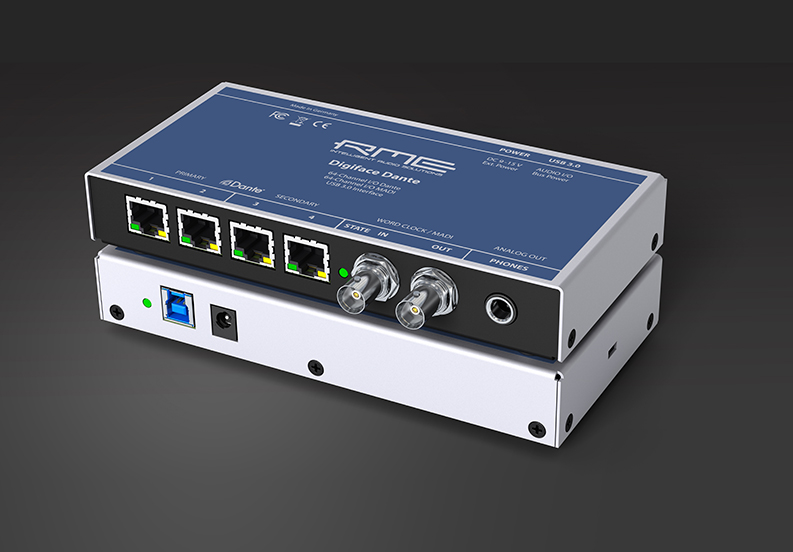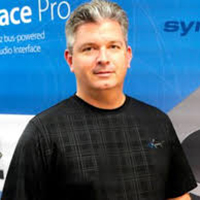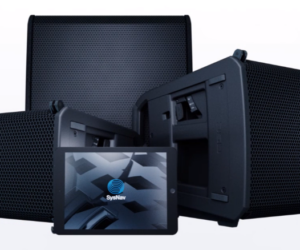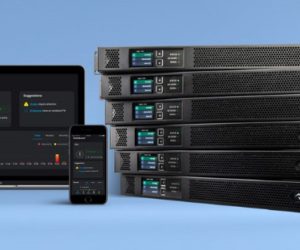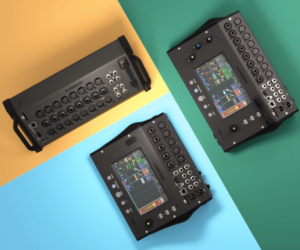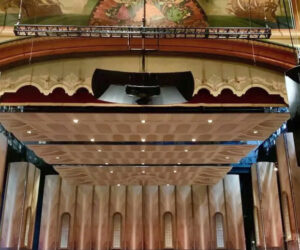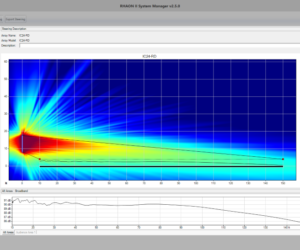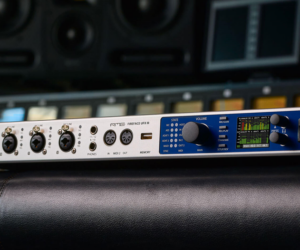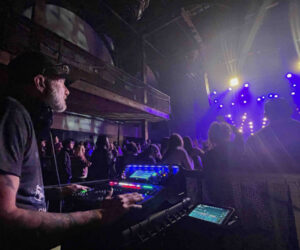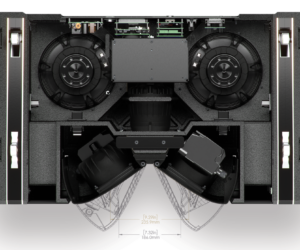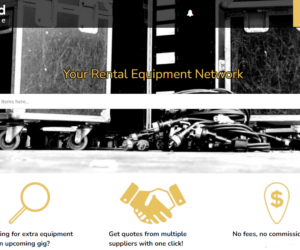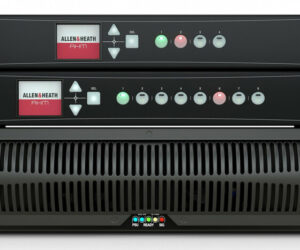Face it: We live in a digital world. And in recent years, like just about everything else, the audio market has felt the digital push. Digital audio systems have become the go-to for audio pros over their more traditional counterparts, and the audio-over-IP movement has taken off.
But with so many networks available — Audinate Dante, MADI, AES 67 and AVB — audio professionals have been left asking, “What products will best suit my audio networking needs?” Let’s break it down.
By definition, a network is a collection of devices connected to one another to allow the sharing of data. RME offers approaches for some of the most commonly used audio network technologies, including Dante, MADI and AVB. RME’s core technology began with the creation of a measuring device and has developed into a full line of products, including audio interfaces, audio converters and mic preamps.
The networking technology is based on the marriage of some core technologies available in all RME interface products as well as the use of Audinate’s Brooklynn II chip for Dante. Similarly, with AVB, RME has paired the same core technology with the AVB Milan specification. Additionally, RME interfaces help solve challenges when working with AVB, and the drivers for both Mac and Windows’ operating systems make them reliable, stable and compatible across a variety of operating systems.
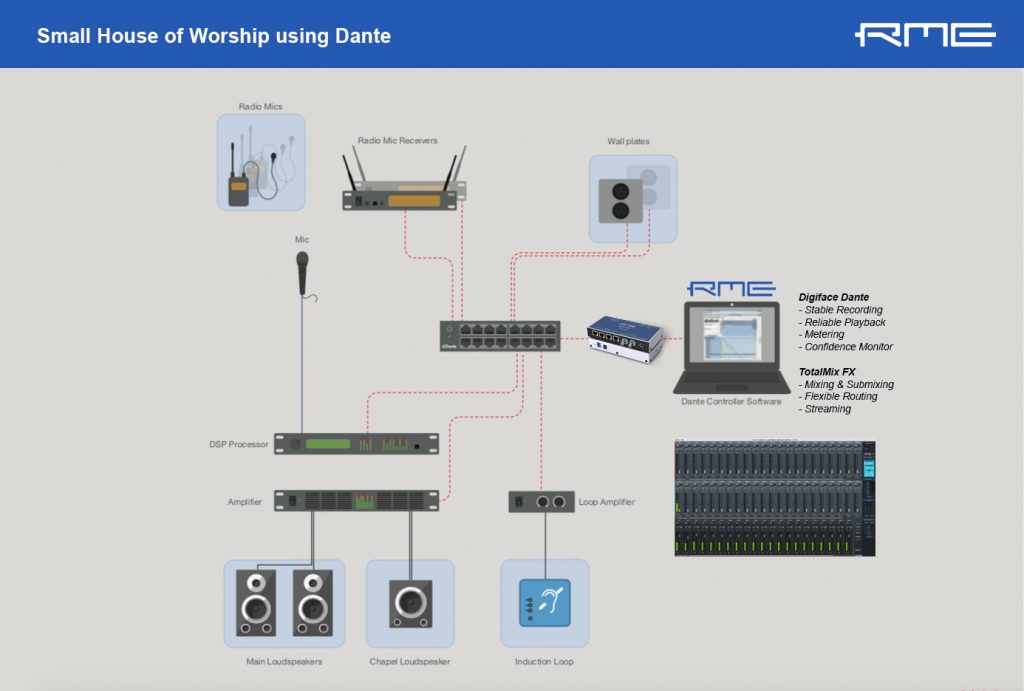
For instance, to help users stay current with the latest operating systems, RME has implemented FPGA (field programmable gate array) technology into all interfaces. This means the company’s in-house engineers program and reprogram hardware to stay current and relevant with today’s operating systems — including, for example, during the recent macOS Catalina update.
Additional Capabilities
The RME networking platform is also designed to solve a plethora of networking issues, including the all-important latency issue. By using RME’s audio drivers, users can achieve very low latency (stated as less than 2 milliseconds or <2 ms) for simultaneous recording and playback, including monitoring using proprietary TotalMix FX software that is built into all RME interfaces. With TotalMix FX, users can also bus, sum, mix and control any single audio level of any network channel they desire. It’s like having Dante Controller or a digital patchbay with faders and metering. This can also be controlled remotely using TotalMix Remote, which is a free software download for RME users.
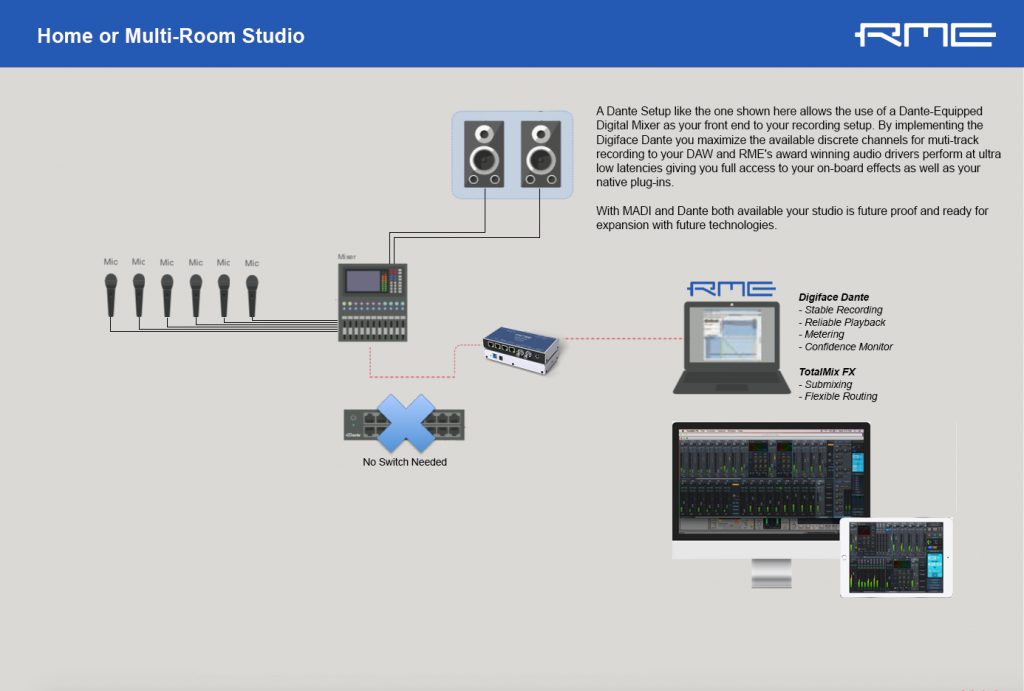
Working with digital audio signals also brings concern for jitter issues, which can often be traced to a component’s internal clock. RME addresses these issues with SteadyClock FS technology and onboard WORD CLOCK I/O. designed to deliver very tight synchronization.
Finally, RME addresses redundancy with options such as the Digiface Dante audio interface, which offers redundancy by using only one interface connected to a computer.
How It Works
With all these capabilities available, how does it all work? All three networking interface solutions function principally the same. By connecting via USB 3.0, the drivers are installed. Once completed, all of the core technology and software is automatically installed.
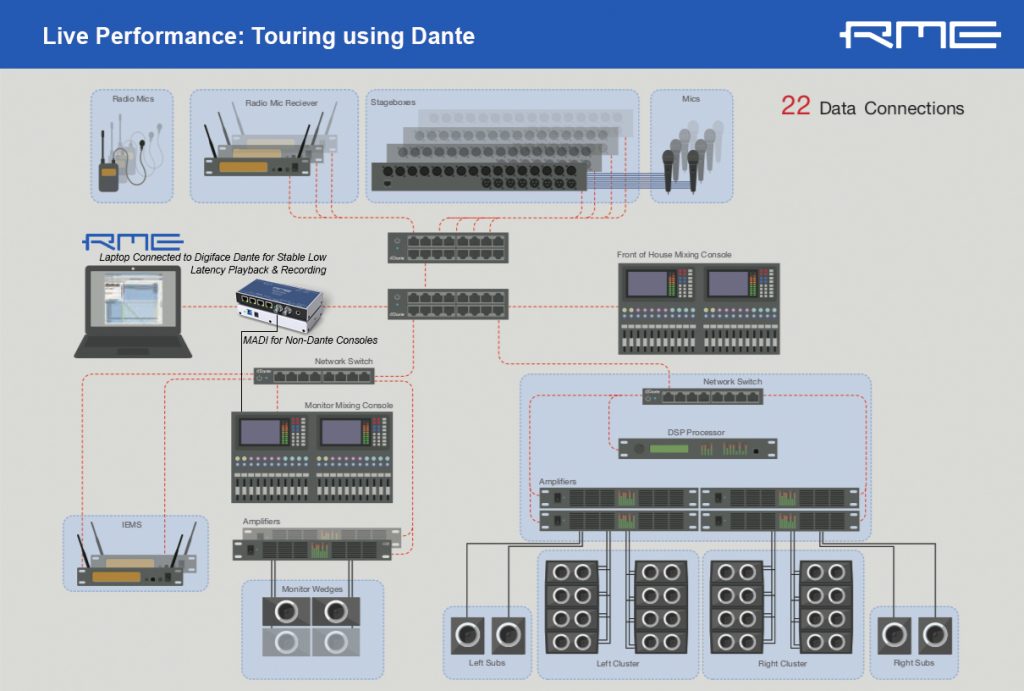
In Dante networks, audio techs simply use a Dante controller to make their connections while TotalMix FX is inserted into the signal path of their choosing. For an AVB network, RME includes an AVB controller for discovering networking devices, defining streams and channel counts as well as making connections.
Overall, RME offers a reliable, low-latency and the low-jitter platform for digital audio networking, while built-in features such as SteadyClock FS and TotalMix FX help insure exceptional audio quality.


